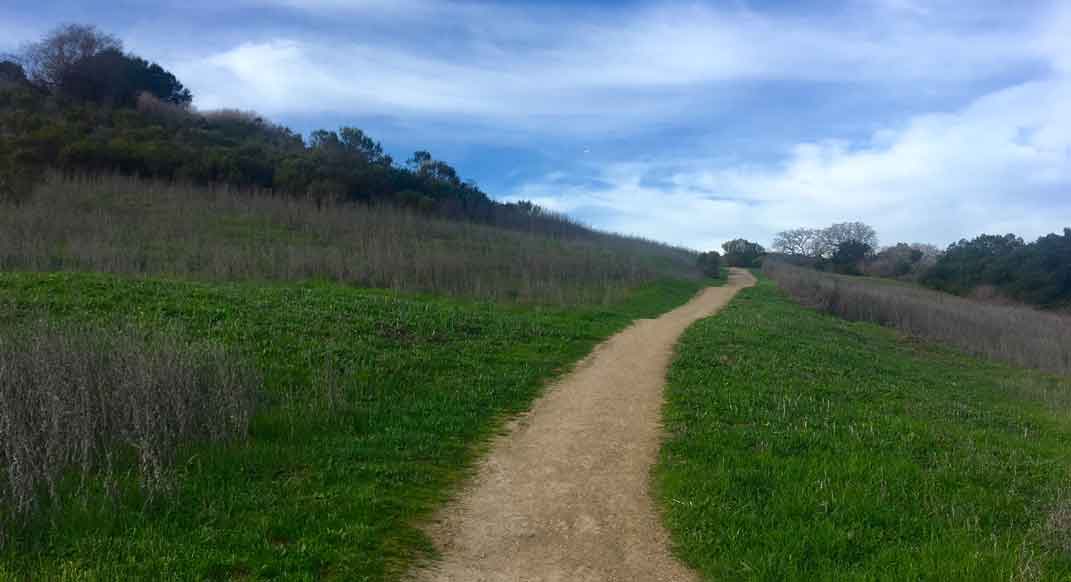5 Tips For Returning to Running After an Injury

Before hammering up the trails, go slow and take some photos.
Sometimes, being a runner means not running for a while.
Injury is the inevitable side-effect of being a lifelong runner, much like death is the inevitable side-effect of being a lifelong human being. You can do everything right, and, even then, unbreakable, immortal health is only possible for vampires and the Queen of England.
In the face of our fragility (if you’re not Dracula or Keith Richards), a big part of being a happy lifelong runner is understanding how to return to running after a layoff. It could be just a few days, or it could be months (even years). No matter how long your trail shoes have been collecting cobwebs, it’s essential to return cautiously to avoid injury and burnout.
The main concern when returning to running is that your mind (and cardiovascular system) may be willing to write checks that your legs (and musculo-skeletal system) are not ready to cash. If you overdraw your account, you’ll be right back where you started—unable to run, this time due to injuries like tibial stress fractures, knee tendinitis or severe nipple chafing.
Here’s how to return to running after an injury.
RELATED: Don’t Call It A Comeback
1. The amount of time off and previous training load determine how you should return.
In 2016, obstacle-course-racing world champion Amelia Boone faced the runner’s nightmare—an MRI that would make any doctor gasp. While training for the Western States 100, what she thought was a muscle pull got worse and worse, until one day it popped. She had fractured her femur. It would be around nine months until she ran again.
With that much time off, Amelia had to rebuild her running legs from scratch. There were two principles she used to get back to running safely, both articulated by Coach Jack Daniels in his book Daniels’ Running Formula.
First, the “ease of maintenance” principle indicates that the body maintains training adaptations better than it builds them in the first place. Thus, when coming back from layoff, it’ll be much quicker to get back to where you were than it was to get there in the first place (there are many complex physiological explanations for this phenomenon, from muscle fiber changes to epigenetics—alterations in gene expression over time).
Second, there are four general categories of layoffs that determine how to utilize the ease-of-maintenance principle—5 days or fewer, 6 to 28 days, 4 to 8 weeks, and 8 weeks or more. According to Daniels, the first category (5 days or fewer) involves no fitness loss using his VDOT metric, which determines training paces in his training system. You can return with an equal number of easy running days at 100 percent of previous volume (so three days off means three days easy before returning to full training).
The second category (6 to 28 days) involves losing 0.3 percent of VDOT fitness at the low end, and 6.9 percent at the high end. That’s hopeful! A week off is less than a percent-fitness loss, and even a month is just a blip on the radar. Daniels recommends spending the first half of the return at 50-percent volume and the second half at 75-percent. So 14 days off for a 40 mile-per- week runner would be 7 days at 20 miles per week, 7 days at 30 miles per week.
The third and fourth categories involve more gradual builds starting at 33 percent before working to 50 percent and 75 percent. Notably, even with extra-long layoffs, Daniels theorizes that there is not more than 20-percent fitness loss by his VDOT metric.
For Amelia, after nine months off, she would have to start with extra-low volume, all at a very easy pace. As she recounted on her blog, she built back patiently, spending an extended time at 33 percent or less of her previous volume. On February 3, 2018, about a year after taking her first post-injury running steps, she finished the Sean O’Brien 100K. Most importantly, by respecting the amount of time she took off, she was able to stay healthy and build back to higher training volumes than pre-injury.

2. Wait until you’re ready, then wait another day.
Coming back to running after injury is like checking your blind spot while driving. Most of the time, switching lanes quickly is no big deal. But it’s better to be extra safe, because all it takes is one mistake to really mess up your day.
Here, checking your blind spot is waiting an extra day or two to run after you think it would be OK. The final phases of healing are important, and it’s better to be 99-percent too overprotective than one-percent too under-protective. We ask our athletes to go one to three days without any discomfort in everyday life before running.
3. Start with brisk walks over varied terrain.
A general rule is that if something hurts to walk, you shouldn’t run on it. Plus, walking is a low-risk opportunity to provide low-level stress to your musculo-skeletal system that will make the transition to running go smoother.
On the walk, you can get really get moving, as if you are in a race to get to the office bathroom after Free Burrito Friday. We ask our athletes to do painless 30-to-60-minute walks for at least a day or two for shorter layoffs, and up to two weeks for longer layoffs.
RELATED: Trail Running Involves Walking, And That Is Awesome
4. Run slowly at first, with walk breaks as needed.
The most important principle is to go slowly when you start back. Even for longer layoffs, your aerobic system (and muscle memory) will have you aching to go right back to your old paces. But there’s a good chance your old paces will be physiologically risky, even when they’re psychologically fun and stress-relieving.
When returning, your running economy (the amount of energy it takes to go a given pace) will be poor, and your musculo-skeletal system will not be adapted to the pounding. So view the first chunk of running as a chance to get used to the impact forces, not as normal training.
Amelia started at 9:30-to-10-minutes-per-mile pace (her normal easy run pace is around 7-to-7:30-minutes-per-mile). Only after that felt relaxed and effortless, with no next-day soreness, did she gradually ease back to her normal paces. You can also use walk breaks (like 1-minute walk for every 1-to-5-minutes run) or anti-gravity treadmills to be extra safe.
5. Ease back into higher frequency and intensity.
A good general principle is that it takes two to three weeks to adapt to a training stimulus. So every time you introduce a new stimulus, give your body some time to absorb it before increasing the load significantly.
When returning from longer layoffs, start with every other day of easy jogging before increasing frequency after a couple weeks. Since the body adapts to consistent stress, aim to run four to six times per week before increasing daily run volume over 30 to 60 minutes. And as Coach Daniels outlined, return with purely easy running until volume is at least 75 percent of previous levels, introducing intensity gradually (usually through strides or hills).

A sample training block we might use for an athlete returning from a long-term, severe injury might look like this:
Week 1: 20 minutes slow run (or run:walk) every other day
Week 2: 30 minutes slow run (or run:walk) every other day
Week 3: 30 minutes slow run 4 to 5 times
Week 4: 30 to 60 minutes easy run 4 to 6 times
Week 5: 30 to 60 minutes easy run 4 to 6 times with strides during a couple runs
Week 6 and beyond: gradually ramp up to normal training, building volume before intensity
There are no hard-and- fast rules for returning after injury. Just make sure you don’t return too hard or too fast.
David Roche partners with runners of all abilities through his coaching service, Some Work, All Play. With Megan Roche, M.D., he hosts the Some Work, All Play podcast on running (and other things), and they wrote a book called The Happy Runner.